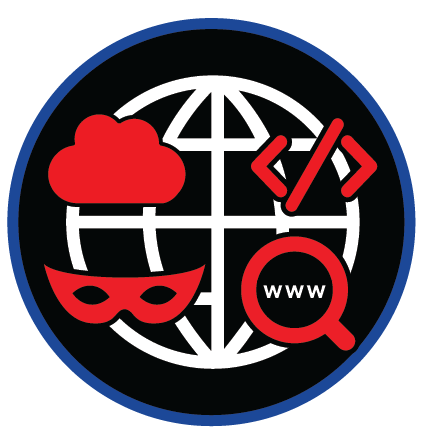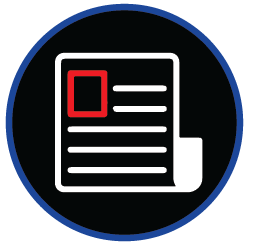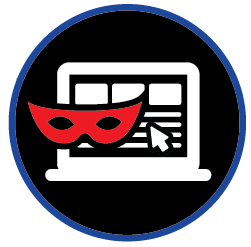
Cyber Risk Exposure
Unveiling Your Organization's Digital Landscape: ThreatNG Cyber Risk Exposure Score
The ThreatNG Cyber Risk Exposure Score goes beyond traditional security assessments. It leverages ThreatNG's robust security suite, encompassing External Attack Surface Management (EASM), Digital Risk Protection (DRP), and expansive intelligence sources. This comprehensive approach assesses not just your organization but also your third-party vendors and your entire supply chain. By analyzing code repositories, cloud configurations, domain vulnerabilities, and even dark web mentions, the ThreatNG score paints a holistic picture of your cyber risk exposure. This proactive approach empowers businesses to identify and address hidden vulnerabilities across their digital ecosystem, ultimately achieving optimal cybersecurity outcomes.
ThreatNG Cyber Risk Exposure Score: Severity Levels Explained
The ThreatNG Cyber Risk Exposure Score utilizes a letter grading system (A-F) to communicate the severity of your organization's overall cyber risk posture. This grading system aligns with the ThreatNG Digital Presence Triad, providing a clear picture of the risk based on three key factors:
Feasibility
This assesses the ease with which attackers could exploit vulnerabilities in your digital ecosystem. Grade A indicates a highly secure environment with limited attack surface, strong code security practices, and minimal exploitable vulnerabilities in domains or cloud configurations. Conversely, Grade F signifies a vulnerable climate with a large attack surface (exposed code repositories, unpatched domains, misconfigured cloud storage), weak code security practices, and readily exploitable vulnerabilities.
Believability
Evaluates the likelihood of attackers targeting your organization or its third parties. A low score (A) suggests a low chance of being targeted, often due to factors like a small attack surface, strong security posture, and operating in a low-risk industry. A high score (F) indicates a high likelihood of being targeted due to the type of data you store (e.g., financial information, intellectual property), the industries you operate in (e.g., healthcare, finance), or a history of past cyberattacks.
Impact
This considers the potential consequences of a successful cyberattack. Grade A signifies minimal potential damage, such as a low-impact website defacement with minimal financial loss. Grade F indicates a scenario with severe consequences, such as a large-scale data breach, ransomware attack leading to operational shutdown, or financial fraud causing significant economic losses.
How the Grades Translate to Severity
A (Low Severity)
Your organization has a robust cyber risk posture with a limited attack surface, low likelihood of being targeted, and minimal potential impact if a cyberattack occurs.
B (Moderate Severity)
While your organization might have weaknesses in its digital ecosystem, attacker interest is still considered low, or the potential impact is manageable.
C (Medium Severity)
This indicates a balance between the ease of exploiting vulnerabilities (Feasibility), the likelihood of being targeted (Believability), and the potential consequences (Impact). Remediating these moderate risks is recommended to strengthen your overall cyber risk posture.
D (High Severity)
Your organization shows vulnerabilities in your digital ecosystem that could be exploited with moderate attacker interest or could lead to significant consequences if a cyberattack occurs. Urgent action is needed to address these vulnerabilities and implement more robust security measures.
F (Critical Severity)
This signifies the highest risk scenario. Your organization has a large and vulnerable attack surface, is highly likely to be targeted by attackers, and could suffer severe consequences if a cyberattack occurs. Immediate remediation is crucial to prevent attackers from exploiting these vulnerabilities.
The ThreatNG Advantage
Considering all three factors (Feasibility, Believability, and Impact), the ThreatNG score goes beyond a simple security audit. It prioritizes cyber risks based on real-world scenarios, allowing you to focus resources on the areas with the most significant potential for a successful attack. This focus on the Digital Presence Triad helps organizations achieve optimal cybersecurity outcomes by first addressing the most critical vulnerabilities.

Navigate Your Digital Landscape with Confidence: Actionable Insights from ThreatNG
A comprehensive understanding of your cyber risk exposure is crucial in today's ever-evolving threat landscape. The ThreatNG Cyber Risk Exposure Score transcends traditional security assessments by offering a wealth of actionable insights fueled by a powerful combination of data and intelligence. It empowers organizations to manage cyber risks and prevent costly security incidents proactively. Here's how ThreatNG delivers superior value:
Actionable Insights and Data-Driven Objectivity
ThreatNG goes beyond simply identifying potential vulnerabilities. The score analyzes your organization, third-party vendors, and the entire supply chain by leveraging External Attack Surface Management (EASM), Digital Risk Protection (DRP), and vast intelligence repositories. This comprehensive view paints an objective picture of your overall cyber risk exposure. With this data-driven approach, you gain actionable insights that pinpoint specific weaknesses in your code repositories, domain configurations, cloud security, and even dark web mentions. It lets you prioritize remediation efforts and make informed decisions to strengthen your cybersecurity posture.
Continuous Monitoring and Improvement
ThreatNG isn't a one-time assessment. Its continuous monitoring capabilities provide ongoing insights into your cyber risk posture. It allows you to track progress on addressing vulnerabilities, identify emerging threats as they surface, and measure the effectiveness of your cybersecurity measures over time. It empowers a proactive approach, enabling you to continuously adapt and improve your security controls, code security practices, and cloud security configurations to safeguard your digital ecosystem.
Comparison and Benchmarking
The ThreatNG score allows for comparison and benchmarking against industry standards or historical data. This comparative analysis helps you understand how your cyber risk posture compares to competitors' and measures the effectiveness of your cybersecurity efforts over time.
Actionable Recommendations
The score doesn't just highlight problems; it provides clear, actionable recommendations for addressing cyber risk vulnerabilities. These recommendations are tailored to the specific details of your digital ecosystem, code security practices, cloud configurations, and dark web presence. It empowers you to prioritize resources and focus on areas significantly reducing your overall cyber risk exposure.
Clear and Transparent Scoring
ThreatNG's scoring system is clear and transparent. Because it is substantiated by the results of EASM, DRP, and extensive intelligence repositories, including Domain Intelligence, Code Secret Exposure, Cloud and SaaS Exposure, and Dark Web Presence investigations, the score provides a verifiable and objective assessment of your cyber risk exposure. This transparency fosters trust and empowers stakeholders to confidently make informed decisions to invest in cybersecurity measures that safeguard your valuable assets.

Unveiling Your Organization's Weaknesses: A Multifaceted Approach to Digital Risk with ThreatNG
The ThreatNG Cyber Risk Exposure Score is a powerful tool, but it's just one facet of ThreatNG's comprehensive digital risk assessment suite. While the Cyber Risk Exposure Score offers a broad overview of your organization's cyberattack vulnerability, ThreatNG provides a far richer spectrum of Susceptibility and Exposure ratings that paint a more detailed picture. These ratings encompass not just your organization but also your third-party vendors and your entire supply chain.
Here's why a multifaceted approach matters:
Granular Insights
The broader Cyber Risk Exposure Score is complemented by more specific ratings pinpointing vulnerabilities in areas like phishing susceptibility, brand damage potential, or specific attack vectors like web application hijacking. This granular detail allows for targeted remediation efforts.
Prioritized Action
You gain a more comprehensive understanding of your risk landscape by assessing various vulnerabilities across different categories. It allows you to prioritize resources and focus on addressing the areas with the most significant potential impact.
Supply Chain Security
Today's businesses rely on complex ecosystems. ThreatNG's assessments can extend beyond your organization, providing visibility into the security posture of your vendors and partners. This holistic view empowers you to identify and mitigate risks across your digital supply chain.
ThreatNG's Spectrum of Security Ratings:
BEC & Phishing Susceptibility
Assesses the risk of falling victim to Business Email Compromise and phishing attacks.
Brand Damage Susceptibility
Evaluate the likelihood of negative brand impacts due to security incidents, financial violations, or social responsibility concerns.
Mobile App Exposure
Analyzes mobile apps for exposed credentials, API keys, and code vulnerabilities, providing insight into an organization's external security risk.
Breach & Ransomware Susceptibility
Assesses the likelihood of falling victim to ransomware attacks, considering exposed ports, known vulnerabilities, and dark web presence
Subdomain Takeover Susceptibility
This section provides a broad view of external attack surface vulnerabilities, encompassing the technology stack, cloud environments, and code exposure.
Data Leak Susceptibility
Measures the potential for data breaches based on cloud configurations, SaaS usage, and code repository security.
ESG Exposure
Evaluate the organization's environmental, social, and governance practices to identify potential security risks.
Non-Human Identity (NHI) Exposure
Quantifies an organization's vulnerability to threats from leaked API keys, service accounts, and system credentials, which are often invisible to internal security tools.
Supply Chain & Third Party Exposure
Analyzes the security posture of your vendors and partners, highlighting potential vulnerabilities within your supply chain.
Web Application Hijacking Susceptibility
Analyzes web applications for vulnerabilities attackers could exploit.

Security Ratings Use Cases
ThreatNG is a security rating platform enabling businesses to evaluate and monitor their security posture and that of their third-party vendors. By leveraging our extensive security information database, ThreatNG provides valuable insights into potential vulnerabilities and risk exposure, enabling organizations to take proactive measures to strengthen their security defenses. This section will explore some use cases where ThreatNG's security ratings can help organizations better understand their security posture and mitigate risk.



























